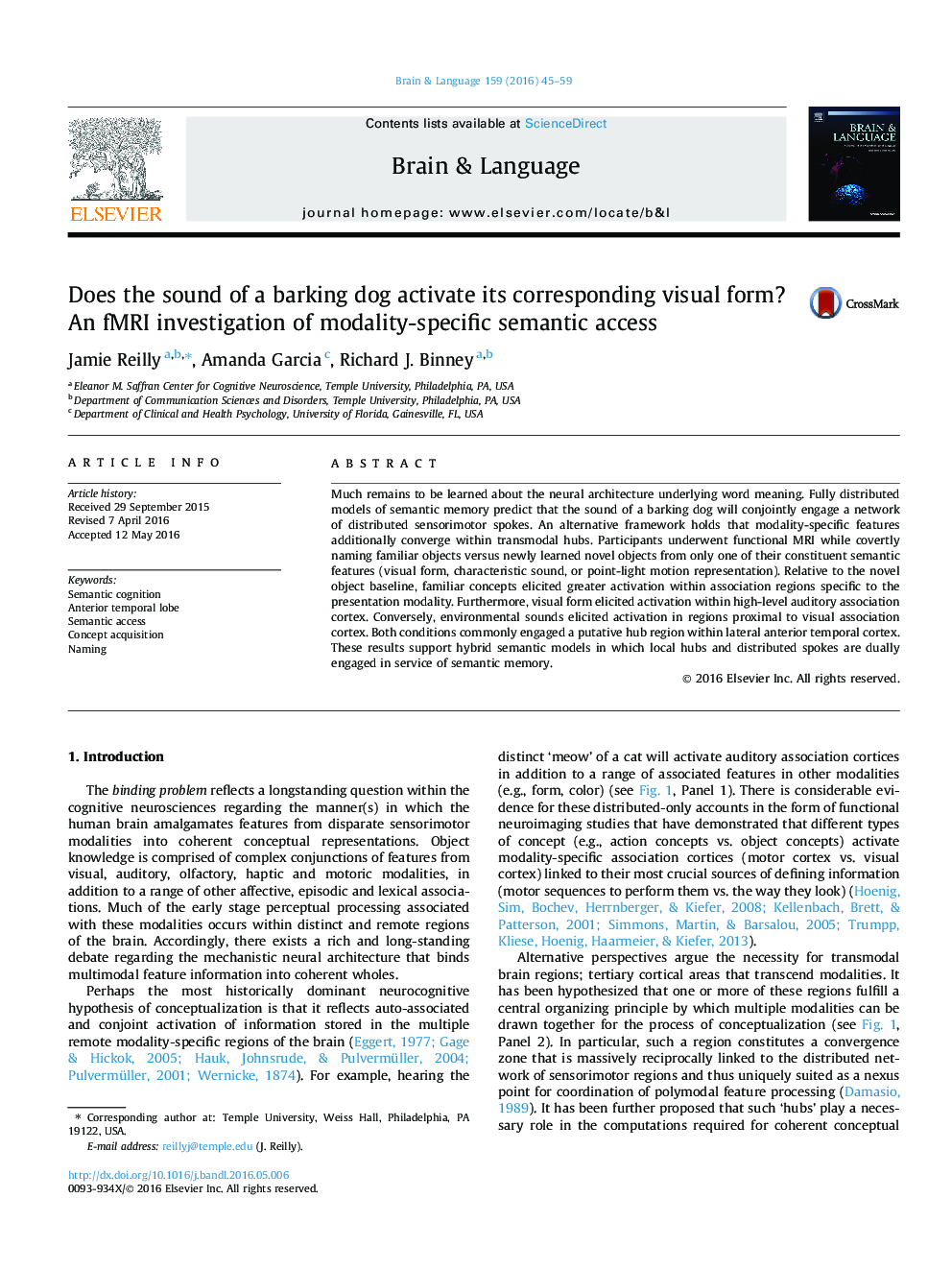| Article ID | Journal | Published Year | Pages | File Type |
|---|---|---|---|---|
| 7283849 | Brain and Language | 2016 | 15 Pages |
Abstract
Much remains to be learned about the neural architecture underlying word meaning. Fully distributed models of semantic memory predict that the sound of a barking dog will conjointly engage a network of distributed sensorimotor spokes. An alternative framework holds that modality-specific features additionally converge within transmodal hubs. Participants underwent functional MRI while covertly naming familiar objects versus newly learned novel objects from only one of their constituent semantic features (visual form, characteristic sound, or point-light motion representation). Relative to the novel object baseline, familiar concepts elicited greater activation within association regions specific to the presentation modality. Furthermore, visual form elicited activation within high-level auditory association cortex. Conversely, environmental sounds elicited activation in regions proximal to visual association cortex. Both conditions commonly engaged a putative hub region within lateral anterior temporal cortex. These results support hybrid semantic models in which local hubs and distributed spokes are dually engaged in service of semantic memory.
Related Topics
Life Sciences
Neuroscience
Biological Psychiatry
Authors
Jamie Reilly, Amanda Garcia, Richard J. Binney,
